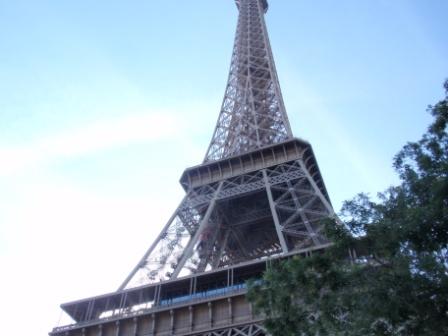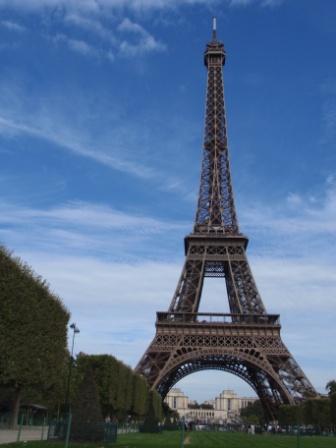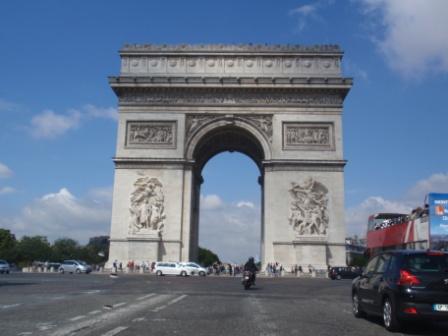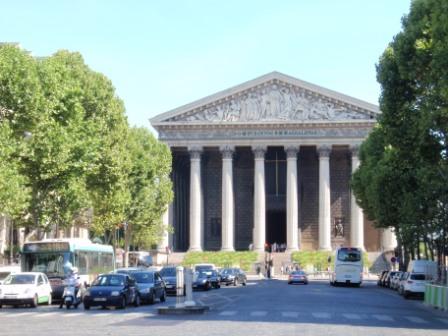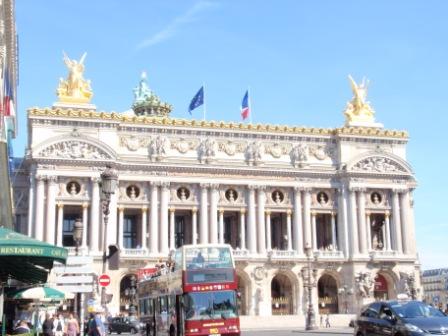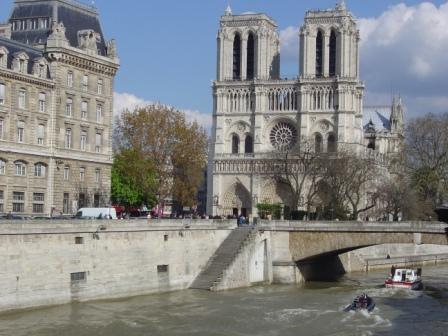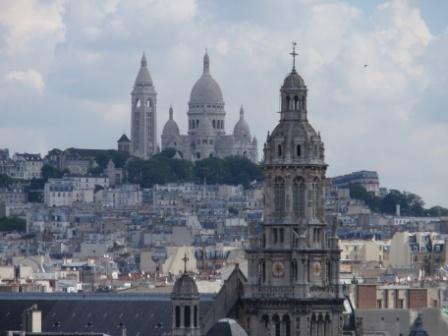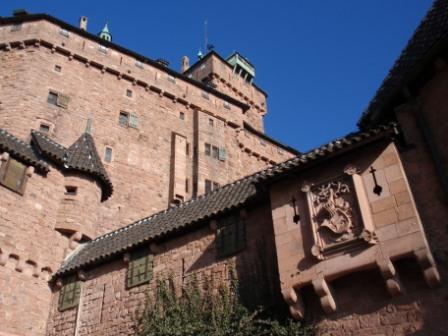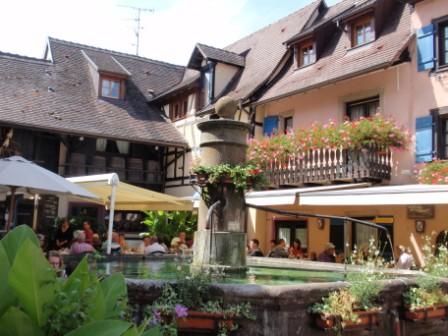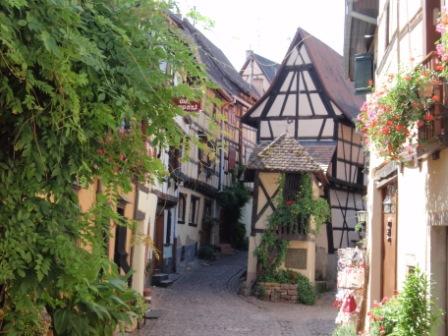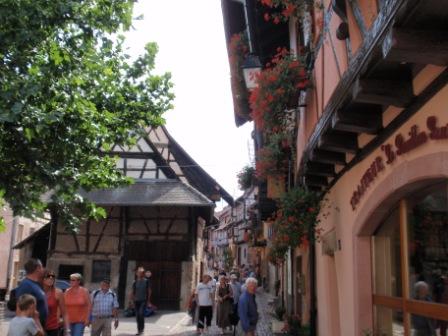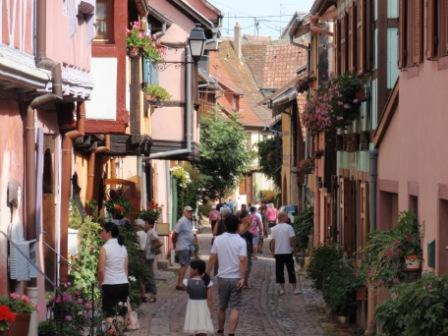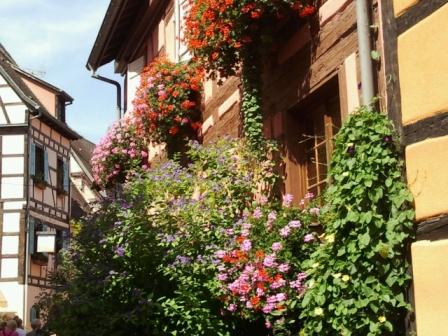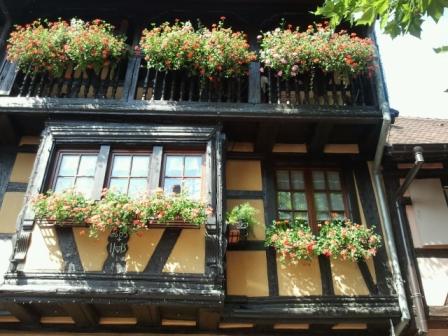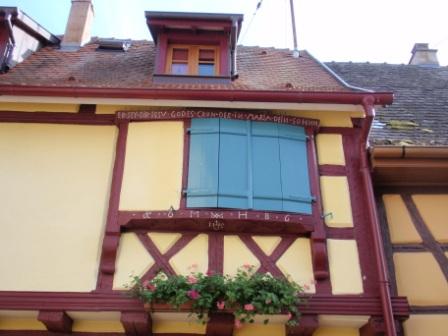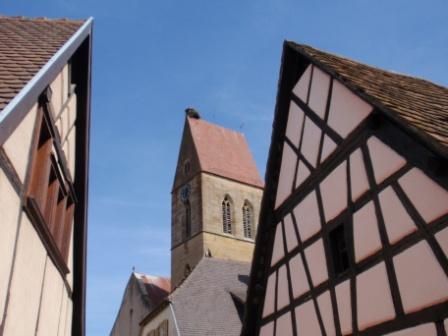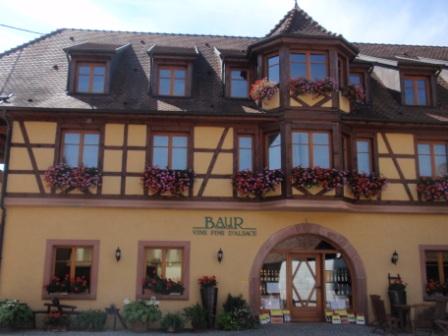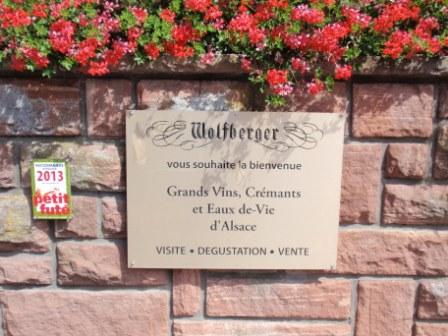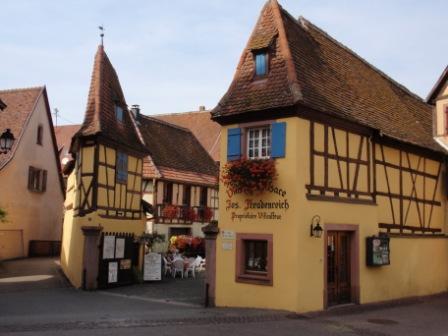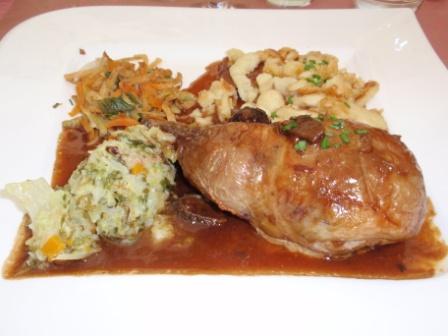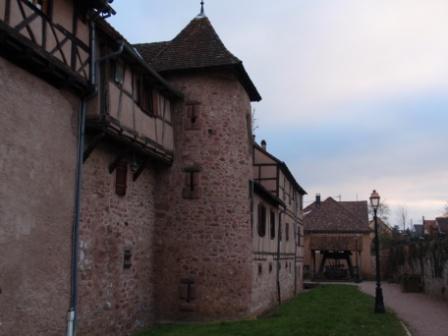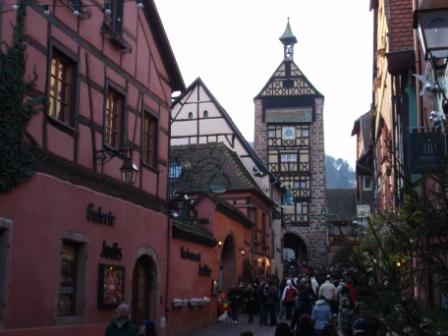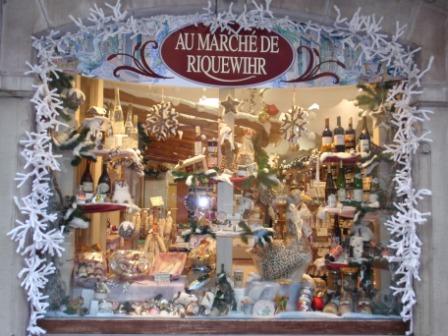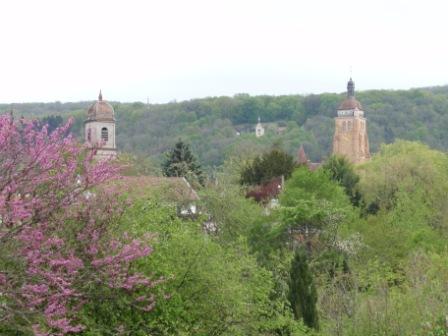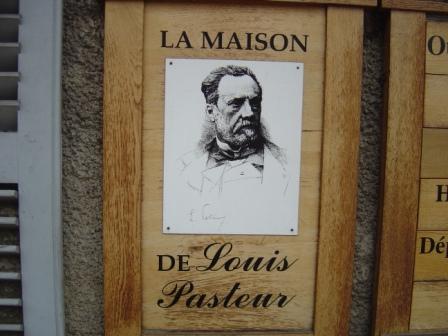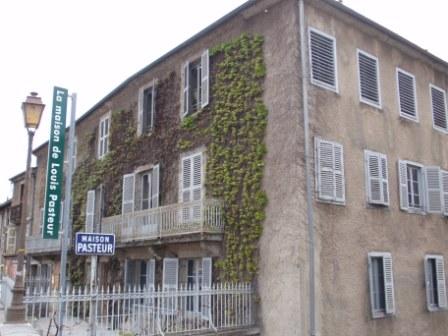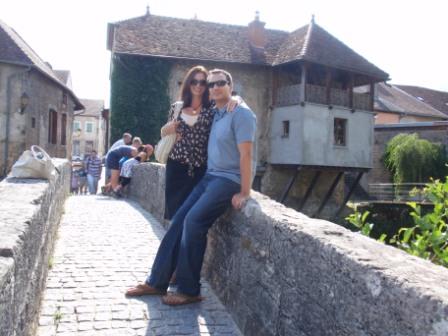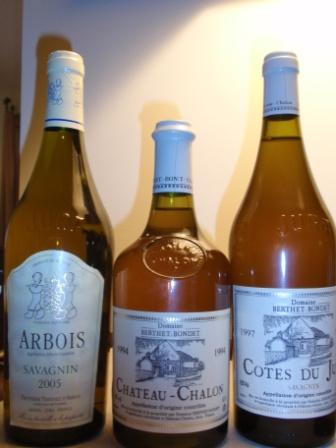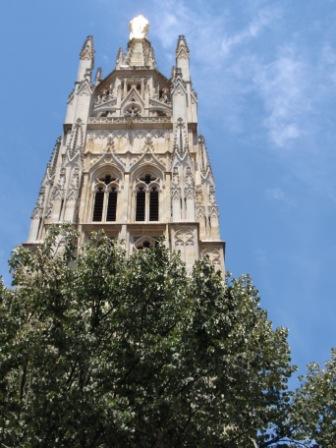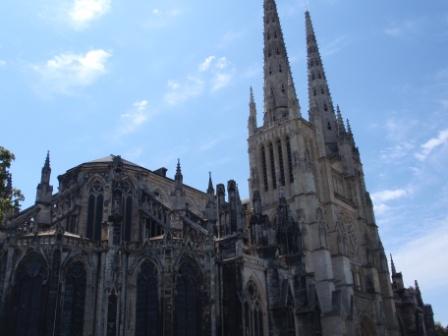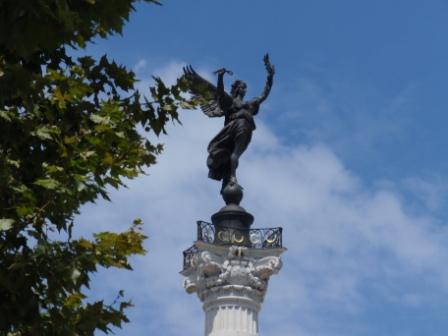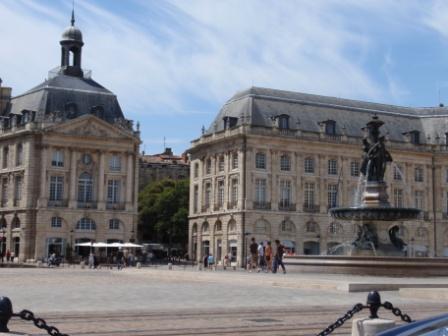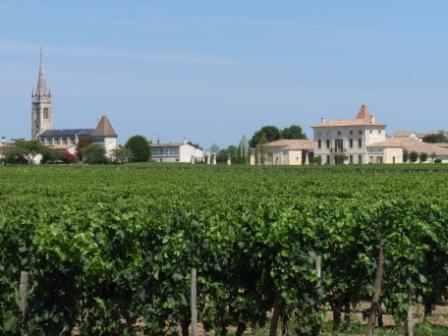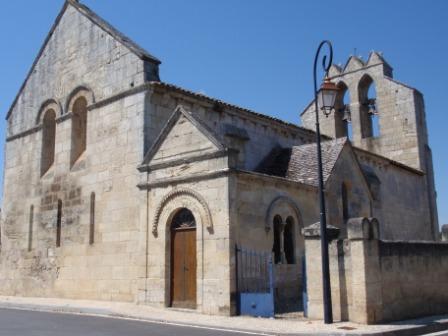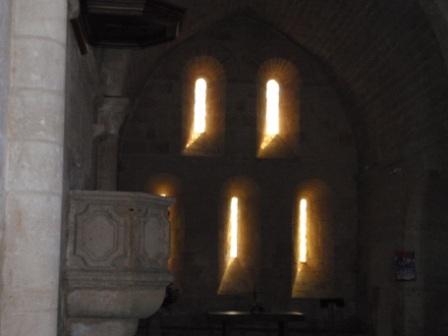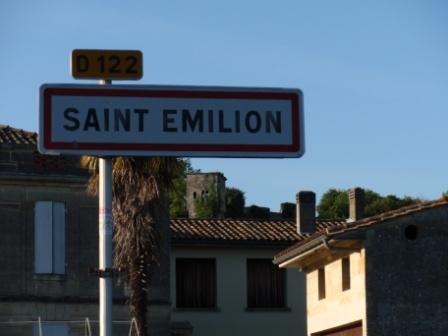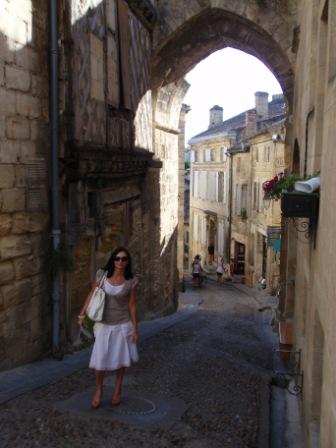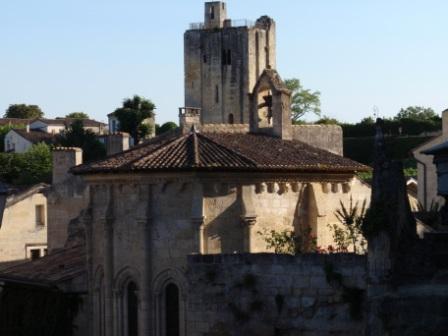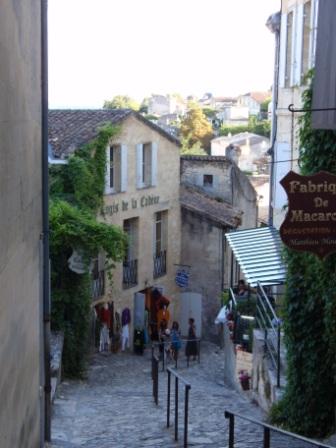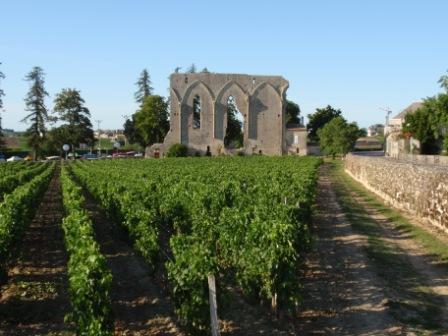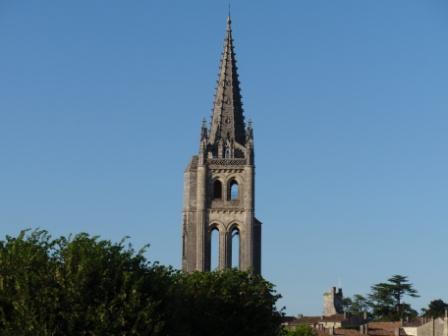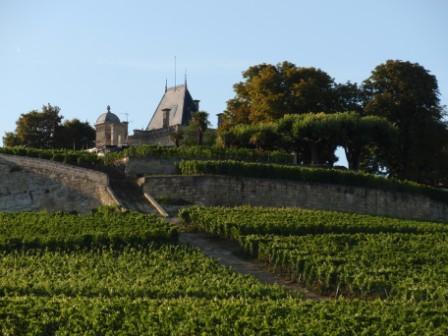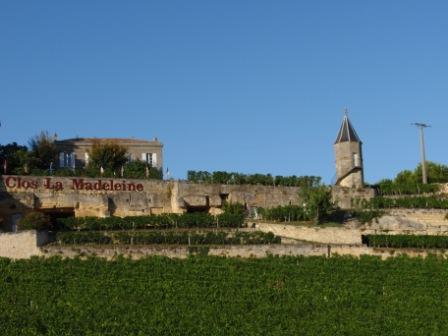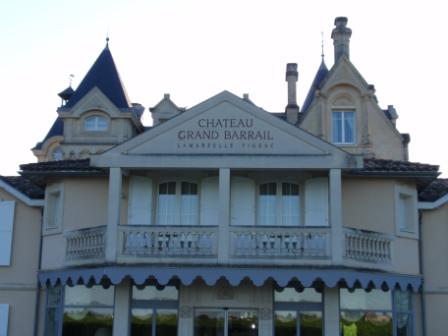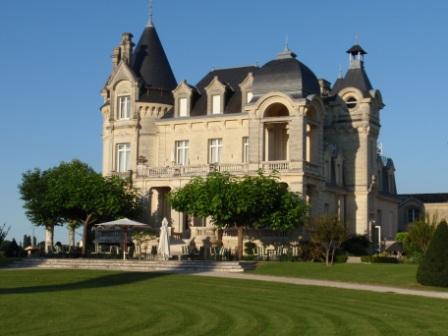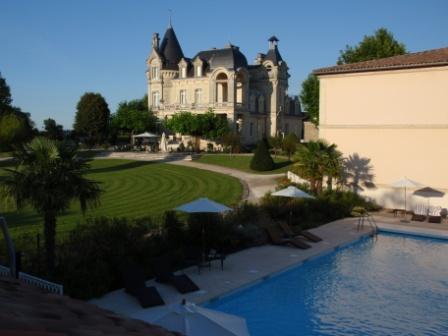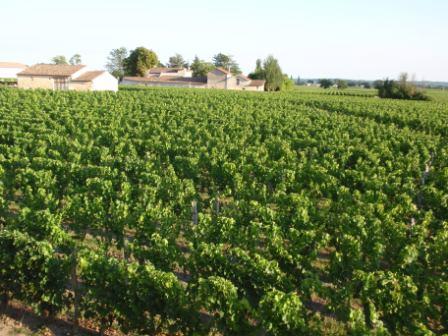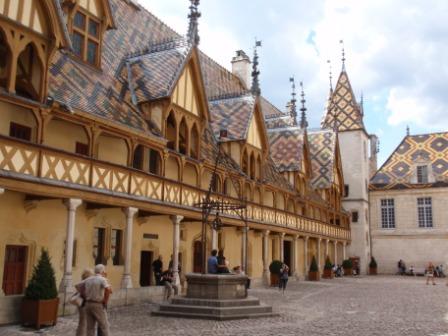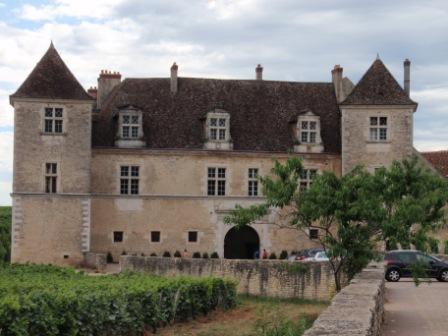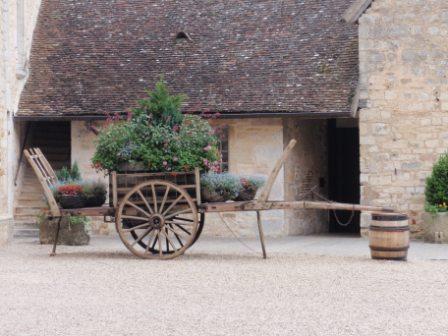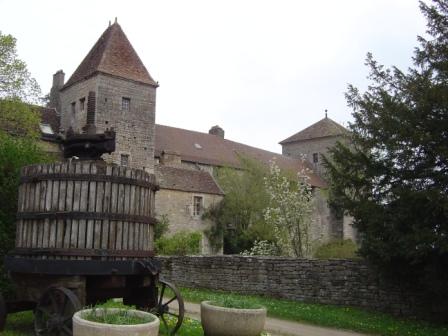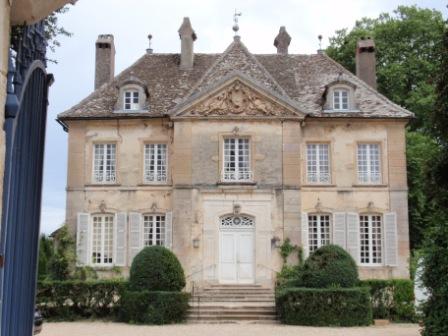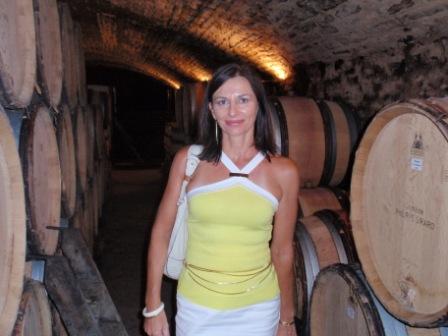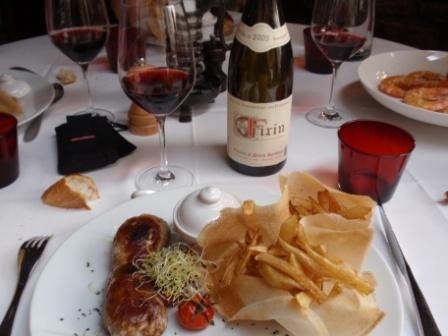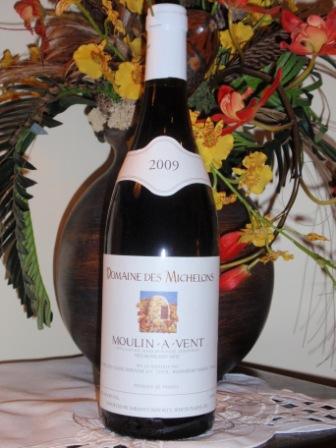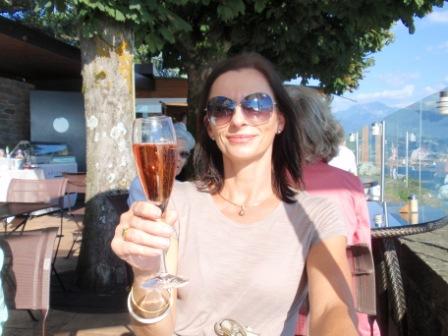FROM THE BEAUTIFUL CITY OF PARIS…
FOLLOW ME TO ALSACE…
Alsace will impress you with its mix of French and German cultures! This magical place has fortified castles highlighting the foothills of the Vosges, architectural treasures and traditional villages! There is so much to explore travelling on the Route des Vins!
Surrounded by vineyards and the vestiges of three castles, the medieval small town of Eguisheim is one of them. Let me show you why Eguisheim was elected favorite village by the French people!
This unique place offers numerous winding streets with stunning colored houses decorated with abundant flowers,
Historic fountains,
A yellow sandstone church with a 13th century Virgin statue,
A beautiful castle,
Look up where ancient inscriptions can be deciphered on the lintels,
See the storks (cigognes) and their nest on top of the St-Peter and St-Paul church,
Eguisheim produces high quality wines, every type of Alsatian grape is grown in this village.
To finish your perfect tour, sit down to a local restaurant to discover the wonderful specialties that Alsace has to offer and taste the fantastic wines from this fabulous region!
Bon Appetit!
WINES FROM ALSACE
Situated between the Vosges Mountains and the Rhine river near the German border, this enchanting region offers medieval towns with cobbled streets, gingerbread houses with flowering window boxes, storks (cigognes) nesting on church rooftops, magical Christmas markets, wonderful food specialties and a wide variety of wines!
The region of Alsace produces wines that pair surprisingly well with all different types of food. Depending on the grape varieties, they can be fresh, light, dry, aromatic or powerful! Pinot Blanc, Riesling and Pinot Gris complement perfectly the local specialties such as choucroute, coq au Riesling, Tarte flambee, etc… Gewurztraminer is well suited for foie gras, lobster and exotic food.
Sylvaner, and Pinot Noir are also other wines choices to pair with fish, choucroute, cold cuts and cheeses. Muscat is also splendid and can be best as an aperitif!
Let’s not forget the production of Cremant d’Alsace or Alsatian sparkling wine, perfect for all occasions, Vendange Tardive or Late Harvest and Selection de Grains Nobles (sweet wine) that are complex and have a long finish!
The region is also the main beer producer of France!
The Alsace wine road with its breathtaking sceneries has many Michelin starred restaurants featuring these perfect wines, produced by local vintners. This gastronomic place deserves a visit! Enjoy Alsace anytime but I must say that Christmas is a magical moment to explore the villages with their special markets and decors!
FOLLOW ME TO ARBOIS…
Full of charm, the old city of Arbois, located in the department of Jura, is renowned for its unique wines: vin Jaune, vin de Paille, Macvin and also for the memory of Pasteur who spent many years of his life there.
The beautiful Romanesque church Saint-Just was built during the 12 century and is in a remarkable condition. Every year on the day of Saint-Just (September 2nd) the Biou ceremony is celebrated. It is an offer to God of the first fruits of the harvest represented by a huge amount of grapes. The ceremony takes place in 3 stages:
– The procession, during which the cluster is attached to a stretcher and carried by men,
– The benediction, where the biou is welcomed to the front of the church by the clergy and brought up of the nave,
– The blessing of the biou followed by the mass.
One of the best chocolatier in France: “Hirsinger”, located in the center of the city, near the plaza.
The river “La Cuisance” runs across the city.
The family’s house of Pasteur is now a museum. Pasteur worked on the fermentation, very precious for the oenological science, and discovered the Pasteurization.
Touring the city is a real pleasure because of all its beauty, history, vineyards, specialties and great wine tasting all over town!
WINES FROM JURA
Located east of Burgundy, this hilly region offers unique wines. The vineyards are very ancient. They exist, at least, since the roman conquest and were very appreciated by dignitaries. Henri IV was very fond of them. I am originated from this lovely area and visit every year. We tour the wineries, churches, museums and eat the best local specialties!
Despite long winters and irregular summers, 5 varieties of vines are cultivated in the clayey terrains:
– Chardonnay and Savagnin for white wines,
– Pinot Noir, Trousseau and Poulsard for red wines.
High quality sparkling wine (Cremant du Jura) is also produced from mixing different grapes.
The wines from Jura, especially Vin Jaune and Vin de Paille are considered among the greatest in France and unique in the entire world!
The particularity of the Vin Jaune (made exclusively with Savagnin) is its winemaking. After fermentation, the wine is aged in barrels for 6 years, sometimes more. The result is a golden wine, heady, with a powerful “bouquet” and lingering finish! After this time, the wine is placed in special bottles named “clavelins” (62 cl) and can be kept for over a century! This fantastic wine can be served with a Coq au Vin Jaune, morels and mushrooms cooked with cream, lobster, duck a l’orange, smoked sausages in a brioche, cheeses such as Comte and Roquefort.
Vin de Paille is also superb! It’s very rare and difficult to find. After 6 years of patience, the wine is rich with an impressive and very concentrate bouquet. This sweet wine is perfect with all desserts.
Red wines can be served with cold cuts (Poulsard), duck breast, chicken, white meat (Trousseau).
Macvin, eau de vie from grapes, is served as an aperitif by itself or mixed with Cremant du Jura and a few raisins placed on the bottom of the champagne glass.
“La route des vins” is only 4 hours away from Paris to discover beautiful landscapes and taste some unforgettable wines!
FOLLOW ME TO BORDEAUX…
Located on the Western coast of France, Bordeaux is the ninth largest metropolitan city in the country and the world’s major wine industry capital. Not only famous for its renowned wines, Bordeaux is also an historic city with 362 monuments (only Paris has more in France) and worth a visit!
This massive quadrangular gothic tower is annexed to the cathedral.
The Royal Gate is from the early 13th century, while the rest of the construction is mostly from the 14th and 15th centuries (Gothique Angevin).
Place de la Bourse (1730-1775) was designed by the Royal architect Jacques Ange Gabriel. The beautiful fountain is the Fontaine des 3 Graces.
AND IT’S REGION…
The village of Pomerol is located on the right bank of the Dordogne River. Pomerol has the smallest great wine district and produces some of the most expensive wine of Bordeaux with the renowned Chateau Petrus!
Lalande de Pomerol situated north of Pomerol produces similar wines that are shorter-lived and also less expensive. The predominant grape variety is Merlot. The village deserves a visit for its unique church built in the XIIth century by the Hospitaliers de Saint-Jean de Jerusalem.
Saint-Emilion also situated on the right bank generates opulent wines with character. They were classified in 1955 and the list is updated every 10 years or so.
Close to the medieval city of Saint-Emilion, the imposing 19th century Chateau Hotel and Spa is the place to choose!
This enchanted place has beautiful rooms with outstanding views overlooking the vineyards.
Discover the gastronomy of the region accompanied by the prestigious wines of Saint-Emilion in the fabulous dining room showcasing stained-glass windows and a unique ceiling!
WINES FROM BORDEAUX
Known internationally for its prestigious and outstanding wines, the Bordeaux region is just a few hours from Paris, easily reached by high speed train or travelling by car throughout the marvelous countryside of France. Magnificent chateaux and vineyards wait to be explored as well as their fine wines!
Cabernet Sauvignon, Merlot and Cabernet Franc are the main grapes grown in the region for red wines. A small quantity of Petit Verdot and Malbec are also produced. Red Bordeaux is generally made from a blend of these grapes varietals.
Sauvignon Blanc, Semillon and Muscadelle are used for the making of white wines. Semillon dominates in the production of sweet wines such as Sauternes and Barsac.
From the right bank of the Dordogne River to the left bank of the Garonne River and Entre-Deux-Mers in between, the Bordeaux region produces many styles of wines!
The soil on the right bank is suited for the growth of Merlot while the left bank has more gravel and Cabernet Sauvignon prevails.
Red blends are generally made with 70%-15%-15% of the different grapes.
Wines from Pomerol, Saint-Emilion, Lalande de Pomerol, Fronsac and other right bank appellations are made predominantly with Merlot.
Wines from Margaux, Pauillac, Pessac-Leognan, Saint-Estephe, Saint-Julien, Graves and other left bank appellations contain the higher percentage of Cabernet Sauvignon.
In 1855, a classification was requested by Napoleon III for the Bordeaux wines and remains in use today. It is a good reference for the consumers and provides a list of outstanding wines.
Whether you prefer Merlot or Cabernet Sauvignon, your palate will be the ultimate judge and I assure you will find a fantastic wine that will satisfy your desire!
FOLLOW ME TO BURGUNDY…
The city of Beaune is famous for its surrounding vineyards producing the highest quality Chardonnay and Pinot Noir worldwide! Stroll the ancient streets while wine tasting and shopping to your delight!
To build our appetite and thirst, let’s begin our day touring “Les Hospices de Beaune”, the perfectly preserved Middle Aged palace where each year it hosts the most famous wine auction in the world.
Let’s drive on “la Route des Vins” to Savigny-les-Beaune, admire the beautiful chateaux and taste the nectar from the enchanted vineyards.
We’ll finish our day at le Restaurant au Clos Napoleon in the village of Fixin eating andouillette avec des frites along with the local Pinot Noir.
WINES FROM BURGUNDY
Burgundy, located southeast of Paris, is one of the world’s most famous areas that produce marvelous and opulent wines. Chardonnay for the whites wines, Pinot Noir and Gamay for the red wines.
Chardonnay is planted in the entire region and reaches its zenith in the Cote-de-Beaune. French Chardonnay is fabulous with a wide variety of foods such as seafood, fish and white meats.
Pinot Noir prevails in different parts of Burgundy, such as Cote-de-Nuits, Cote-de-Beaune, Cote Chalonnaise and Maconnais. Pinot Noir is a delicate red-wine grape. The flavors of intense fruit and soft tannin are unique to the region and can’t be found in the Pinot Noir from California. It’s an excellent choice with coq au vin, roasted chicken, beef stew, game and lots of cheeses.
Gamay is the dominant grape in Beaujolais and is also grown in Maconnais. Delicious paired with pate, charcuteries (cold cuts), grilled steaks, fish, eggs and fresh cheeses.
“La route des vins” is only 3 hours away from Paris! Great wines wait to be sampled and many restaurants to be discovered! Enjoy!
WINES FROM BEAUJOLAIS
The enchanted region of Beaujolais is located south of Macon and north of Lyon. It is one of the most spectacular viticulture areas with its gorgeous mountainsides, lovely valleys and historic villages.
With its warm climate and granite soil, Beaujolais produces exclusively red wine made from the Gamay grape (98 %).
The region is renowned internationally for its very popular Beaujolais Nouveau and it’s tradition of winemaking. From New York to Tokyo, Cape Town or Helsinki, Beaujolais primeur wine is acknowledged for its fresh, fruity and easy drinking style, but the region has much more to offer!
Let’s start with the wine labeled Beaujolais that can be produced anywhere within the region, then the Beaujolais-Villages with a slight fuller body and last but not least the grands crus!
Beaujolais provides 10 exceptional grands crus, with each, recognized to have its individual style. These wines are more concentrated and have more character. They can be kept in a cellar for almost a decade!
From south to north, the 10 grands crus are:
– Brouilly,
– Chenas,
– Chiroubles,
– Cote-de-Brouilly,
– Fleurie,
– Julienas,
– Morgon,
– Moulin-a-Vent,
– Regnie,
– Saint-Amour.
Enjoy these wines slightly chilled with a wide variety of food! From bistro style cuisine to gastronomic dinner, Beaujolais wines pair wonderfully with cold cuts, fish, meat, vegetables, cheeses, desserts with red fruits and with exotic foods.
Only 4 ½ hours from Paris, this splendid region deserves a visit! Don’t wait to discover the outstanding wines of Beaujolais!
BEAUJOLAIS NOUVEAU
At the stroke of midnight on the third Thursday of each November, the Beaujolais Nouveau arrives! This annual ritual is one of the most exciting events for wine lovers.
Beaujolais Nouveau is shipped all over the world and will be open on that specific day! Banners proclaim the good news: le Beaujolais Nouveau est arrive!
In France, people wait until midnight in bars and restaurants to taste the first wine of the year! There is a great amount of excitement around Beaujolais Nouveau.
Beaujolais Nouveau is a light and fruity wine made from Gamay (Gamay noir a jus blanc). All the grapes must be picked by hand and come from the appellations of Beaujolais and Beaujolais-Villages. Georges Duboeuf is the largest negociant in the region and his wine can be found all over the globe!
The process of making Beaujolais Nouveau is called carbonic maceration. This technique doesn’t extract the bitter tannins from the grape skins and preserves the freshness of the wine.
Beaujolais Nouveau should be consumed within 6 months after its release and be served slightly cool, about 55 degrees Fahrenheit.
Keeping the tradition is very important! It is really fantastic to celebrate at the same time as bars, restaurants and bistros around the world!
To complete the celebration, here are some suggestions of food pairings for Beaujolais Nouveau. Cold cuts including pates are perfect! Try my recipe of chicken liver pate! I make it every year! It is delicious! Red Snapper with raspberry vinegar reduction is also wonderful! Roast poultry, coq au vin, steaks with butter sauce and herbs complement the wine. Regarding cheeses, goat cheese with a French baguette, blue cheese and soft cheeses are some recommendations. To finish dinner, desserts served with red fruits are a must!
So don’t forget! Third Thursday of November, the Beaujolais Nouveau arrives! Cheers!
CHAMPAGNE
Less than 100 miles from Paris, the Champagne region is situated in the northeastern part of the country. Reims, where 25 kings of France have been anointed in its glorious cathedral, is a must see!
Champagne, world most famous wine, enjoyed by many of us for its pleasant taste, sophistication and lightness evokes special occasions, parties, romance… so, don’t forget, true Champagne is only made in Champagne. The French Benedictine monk Dom Perignon (1638-1715) contributed to its creation.
The 3 grapes varietals allowing the production of this nectar are Pinot Noir, Pinot Meunier and Chardonnay. The vineyards planted in the chalky soil of the region provide the perfect components to produce this fantastic wine.
Wine for the Kings and King of the wines, Champagne is a luxury product at an affordable price!
Champagne must be served around 45 degrees F. Most often appreciated as an aperitif or for toasts, in this case, a bottle of Champagne “blanc de blancs” or rose will be best. Champagne pairs perfectly with many types of food. For instance, Champagne “blanc de blancs” will complement some seafood such as lobster, crab, oysters and also some light appetizers. For an entrée, such as poultry, a bottle of Champagne millesime*will be appropriate.
Regarding desserts, Champagne demi-sec or white star will be an excellent choice. These Champagnes are sweeter.
The very famous “grandes maisons” of Champagne wait to be toured. Names such as Bollinger, Heidsieck Monopole, Krug, Moet et Chandon, Mumm, Perrier Jouet, Pommery, Roederer, Ruinart, Taittinger, Veuve Cliquot and Vranken make us dream!!!
“Dire non au Champagne, c’est dire non a la vie!”(to say no to Champagne is say no to life!)
A votre santé!
*Champagne millesime is produced only on the best years. It is sold 3 years later.
WINES FROM THE LOIRE VALLEY
The Val de Loire starts south of Paris near Orleans and covers a large part of central France. The region stretches from the Atlantic coast near Nantes to the east close to the border of Burgundy. This wine region is one of the most well known in the world and the history of viticulture is very ancient. The Loire Valley produces whites, roses and red wines, without forgetting the Cremant de Loire (sparkling wine). Within this vast territory, the climate, soils and grape varieties are very diverse.
Rich in history, with its hundreds of fortresses and castles, the Loire Valley is referred by the French people as the cradle of the French and the garden of France for its abundance of vineyards, fruits and vegetables.
The Valley has 4 classified regions with the appellation d’origine controlee (A.O.C.) – controlled place of origin, which are:
- Pays Nantais,
- Anjou-Saumur,
- Touraine,
- Centre.
With its location near the Atlantic Ocean, the Pays Nantais produces Muscadet (melon de Bourgogne grape), dry white wine, ideal with fish and seafood. In the west, gros plant grapes are also grown and made into another white wine that pairs perfectly with oysters.
Anjou-Saumur has a wide variety of wines. Anjou is very well known for its rose wines but the major grape grown in the region is Chenin Blanc. The rose wines must be consumed young to appreciate their fruitiness and liveliness.
Anjou-villages is recognized for its red wines made from Cabernet Franc or Cabernet Sauvignon. Gamay is also grown in the region.
Savennieres, Coteaux du Layon, Chaume and Quarts-de-Chaume market some of the best sweet white wines in the country.
The city of Saumur is renowned for its castle and school of cavalry and also for its wonderful sparkling wines. The Saumurois is the largest region producing sparkling wines in quantity. These wines are made in the Methode Traditionnelle from Chenin Blanc, Sauvignon Blanc, Chardonnay and Cabernet Franc.
La Touraine has been called the garden of France from a long time ago! Castles and vineyards live in a beautiful harmony! This royal region delighted the kings of France with its wines! Vouvray and Montlouis produce white wines from Chenin Blanc that can be dry, semi-sweet or sweet. Chinon, Bourgueil and Saint-Nicolas de Bourgueil are some wonderful, fine red wines made from Cabernet Franc. These very lively wines, with aromas and flavors of berries are at their best slightly chilled.
The Centre located in the center of France showcases multiple types of wines. Among them, the fantastic wines from Sancerre and Pouilly Fume are produced with Sauvignon Blanc. These very distinctive dry white wines are easy to recognize because of the mineral taste from the terroir.
With the vast range of wines that the Val de Loire produces, all types of palates can be satisfied! If you travel in this fabulous area, explore the beautiful vineyards and villages along with their majestic castles and go down in the cold cellars to taste the blood of the Earth!
Water separates us but wine units us! Cheers!
WINES FROM PROVENCE
The magnificent region of Provence is situated in southeastern France and covers five departments:
- Alpes-de-Haute Provence
- Alpes-Maritimes
- Var
- Bouches-du-Rhone
- Vaucluse.
What does Provence evoke to French people? Picturesque landscapes contrasted with light and shadows, sunny days, different red colors of the soil and mountains, scent of the pines, song of the cicadas and people speaking with a singing accent! The area offers many supplies from the bounty of the Earth including olive oil, fresh herbs, fruits, vegetables, flowers among them the famous Lavender and of course vineyards!
Viticulture in Provence is very old and was brought by the Greeks six centuries before our era. Nowadays, many varieties of grapes are grown throughout the region but the major are Mourvedre, Grenache, Cinsault, Syrah and Tibouren.
Winemakers from Provence provide us with delightful dry rose wines. These refreshing wines are especially appreciated during the warm weather months in outdoor cafes and restaurants for an al fresco dinner along the French Riviera with the traditional Provençale cuisine, such as bouillabaisse, aioli and fresh fish from the Mediterranean Sea.
White wines are also dry, fruity, aromatic and delectable! They pair really well with seafood, fish, bouillabaisse, bourride and light meat. White wines from Cassis are my favorite!
Bandol, located near Marseilles and Cassis, produces red wines that are characterized by their dark color, flavors of spices, leather and red fruits. Cabernet Sauvignon is also used in the blend with other grape varieties. These wines are the perfect accompaniment to red meat, boeuf en daube (local beef stew), game and cheeses.
The vast region of Provence offers extraordinary and enchanting sites, breathtaking landscapes, rich history and culture, fantastic artists, beautiful weather, dramatic coast with the Calanques of Cassis, best outdoor markets, sumptuous Riviera, delicious local food and many satisfying wines! Don’t wait to visit this stunning part of France and taste all its wonderful specialties!
WINES FROM THE RHONE VALLEY
Winemaking in the Rhone Valley is very ancient and dates back 600 years before Christ. In the 12th century, the Catholic Church was the biggest owner of the vineyards in the region and made it prosperous. Cathedrals, churches, convents and chapels were built or rebuilt and to do so, the Catholic Church rented their properties. The crown achievement of that period was the installation of the papacy in Avignon with Pope Clement V in 1309.
The Rhone Valley region is the second largest producer of wines after the Bordeaux region. The vineyards cover 6 departments:
- Rhone
- Loire
- Ardeche
- Drome
- Vaucluse
- Gard
Two forces of nature, like nowhere else, makes this place absolutely unique! The river king and the master of winds: which are the Rhone and the Mistral!
The soils are extremely diverse in the region and the combination of the climate and vines offers consumers a wide variety of wines.
Usually, we distinguish between the northern and the southern Rhone Valley. For travelers, leaving Lyon and driving south, the route offers breathtaking views of the stunning terraced vineyards, growing on granitic soil. The northern part produces the fabulous Syrah, rich in aromas, for the red wines and the delicate Viognier, for the white wines. Sometimes, the winemakers mix these two grapes to produce a wine more round and supple.
Red wines made with Syrah can be kept many years. White wines made with Viognier must be drunk young.
Cote Rotie is the beginning of the northern wine region, followed by the other prestigious appellations such as Condrieu, Chateau Grillet, Saint-Joseph, Hermitage, Crozes-Hermitage, Cornas and Saint-Peray.
Red wines made with Syrah offer a wide range of style. For instance, Cote Rotie or Hermitage are full bodied wines with rich tannins. Saint-Joseph or Crozes-Hermitage are fruitier and less complex. These red wines pair perfectly with red meat, game, confits and strong cheeses.
The southern Rhone Valley starts south of the city of Montelimar and benefits from the Mediterranean climate with dryer and warmer summers. The vineyards are wider and cultivated on limestone. The southern Rhone Valley produces most of the wines of the entire region.
Grenache is the primary grape grown in the region and represents 2/3 of the red wine production. Other red grapes such as Syrah, Cinsault, Mourvedre and Carignan are also grown and mixed with Grenache to give harmony and character to those magnificent red wines! Delightful rose wines are also made in Tavel and Costieres de Nimes.
White wines are produced from Marsanne, Roussanne, Viognier and Grenache Blanc grapes. Ugni Blanc, Bourboulenc, Picpoul and Clairette (used for sparkling wine) are also grown in the region. Muscat is cultivated in Beaumes-de-Venise and makes a fantastic sweet wine to enjoy as an aperitif or dessert wine. It is my favorite kind of Muscat!
In the Rhone Valley, the type of wines can vary tremendously regarding the blend of grapes that each winemaker mixes.
The appellations for the southern region are Coteaux-du-Tricastin, Beaumes-de-Venise, Rasteau, Gigondas, Vacqueyras, the famous Chateauneuf-du-Pape, Lirac, Tavel, Cotes-du-Vivarais, Cotes-du-Rhone, Cotes-du-Rhone Villages and Vinsobres. Most of the red wines are a blend of four or five grape varieties.
The prestigious appellation Chateauneuf-du-Pape encompasses 5 villages. The originality of their vineyards is the soil. Red clay covered with layers of white stones, called galets, retained the heat and contribute to the ripening of the grapes. Wines can be subdivided in 2 types: classic, rich, high in alcohol that can be kept many years, and the other kind lighter with more fruit flavors and spices but must be drunk earlier. Chateauneuf-du-Pape is a wonderful pair with lamb, beef, duck, and game.
Each wine of this fabulous region will offer a display of aromas, flavors, colors, structure and complexity depending upon the blend of grapes used by the winemaker. Wines from the Rhone Valley are renowned and offer high quality to the consumers.
The Rhone Valley is located 5 hours southeast of Paris and goes 250 miles down south. This magnificent region deserves a long visit to taste most of its outstanding wines. Cheers!
